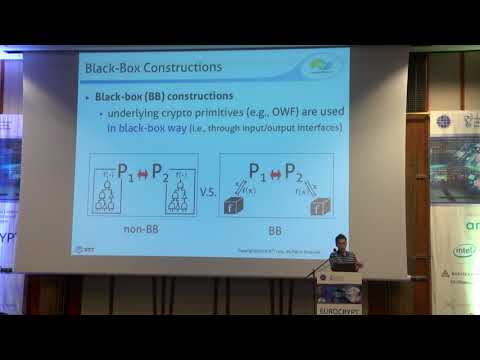Welcome to the resource topic for 2018/156
Title:
A New Approach to Black-Box Concurrent Secure Computation
Authors: Sanjam Garg, Susumu Kiyoshima, Omkant Pandey
Abstract:We consider the task of constructing concurrently composable protocols for general secure computation by making only black-box use of underlying cryptographic primitives. Existing approaches for this task first construct a black-box version of CCA-secure commitments which provide a strong form of concurrent security to the committed value(s). This strong form of security is then crucially used to construct higher level protocols such as concurrently secure OT/coin-tossing (and eventually all functionalities). This work explores a fresh approach. We first aim to construct a concurrently-secure OT protocol whose concurrent security is proven directly using concurrent simulation techniques; in particular, it does not rely on the usual ``non-polynomial oracles’’ of CCA-secure commitments. The notion of concurrent security we target is super-polynomial simulation (SPS). We show that such an OT protocol can be constructed from polynomial hardness assumptions in a black-box manner, and within a constant number of rounds. In fact, we only require the existence of (constant round) semi-honest OT and standard collision-resistant hash functions. Next, we show that such an OT protocol is sufficient to obtain SPS-secure (concurrent) multiparty computation (MPC) for general functionalities. This transformation does not require any additional assumptions; it also maintains the black-box nature as well as the constant round feature of the original OT protocol. Prior to our work, the only known black-box construction of constant-round concurrently composable MPC required stronger assumptions; namely, verifiable perfectly binding homomorphic commitment schemes and PKE with oblivious public-key generation.
ePrint: https://eprint.iacr.org/2018/156
Talk: https://www.youtube.com/watch?v=SXqY2kPoOqY
See all topics related to this paper.
Feel free to post resources that are related to this paper below.
Example resources include: implementations, explanation materials, talks, slides, links to previous discussions on other websites.
For more information, see the rules for Resource Topics .
